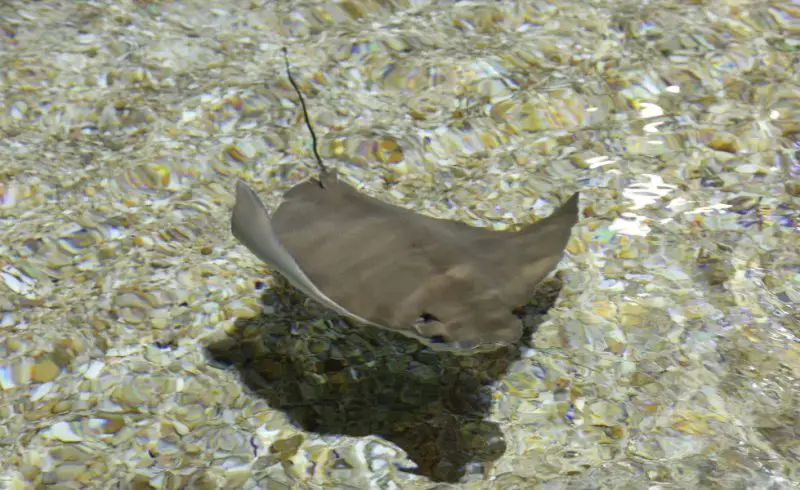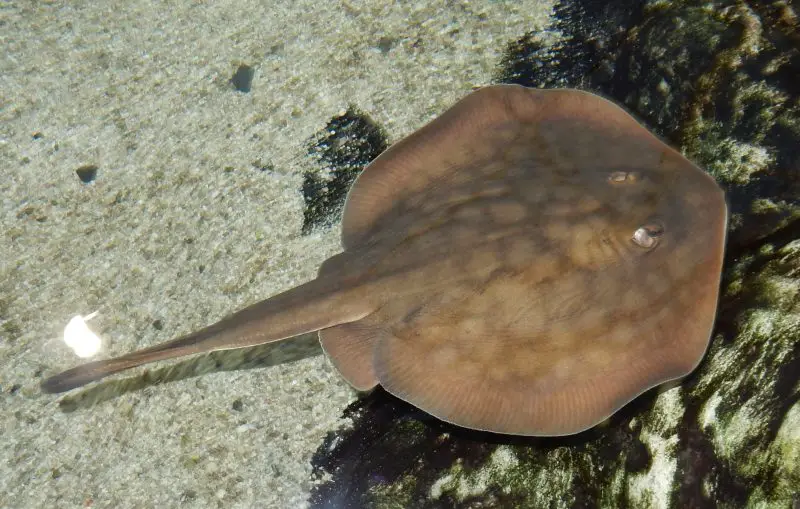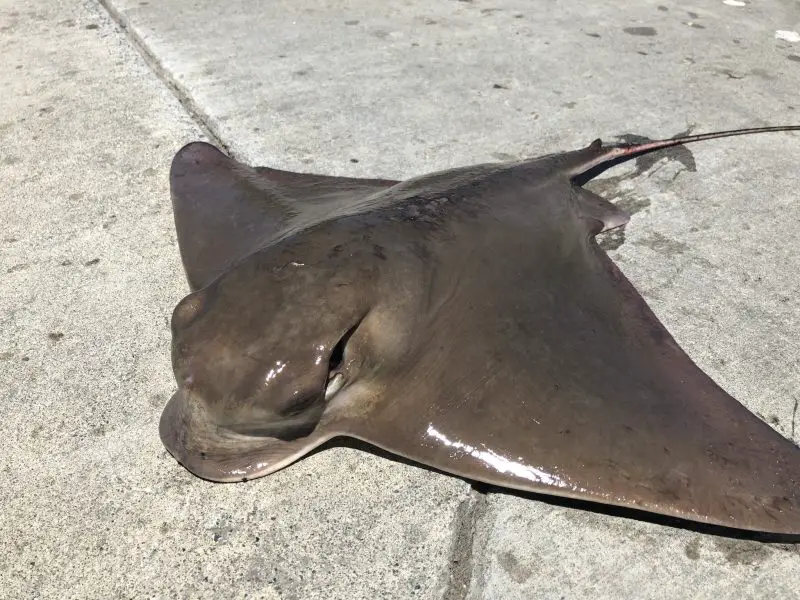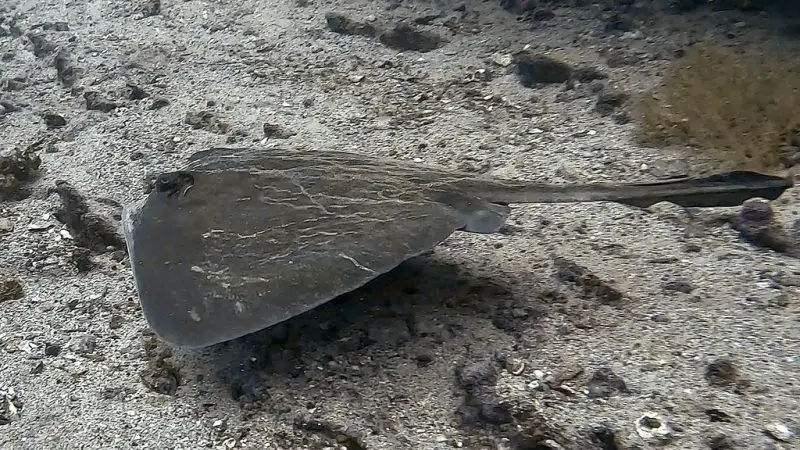Stingrays are among the most captivating yet misunderstood marine animals found along California’s coastline. Their flat, diamond-shaped bodies glide effortlessly through shallow waters, often just feet from where people swim or surf. For many beachgoers, this graceful movement can evoke both awe and anxiety. Are these creatures dangerous? Why are they so common in California?
In reality, stingrays are peaceful animals that play a vital role in maintaining the health of the marine ecosystem. Most injuries occur accidentally when people step on them without realizing they are there. To truly understand the truth about stingrays in California beaches, we must look beyond myths and focus on their biology, habits, and the practical ways we can coexist safely.
Understanding Stingrays in California

What Are Stingrays?
Stingrays are cartilaginous fish belonging to the same subclass as sharks, known as Elasmobranchii. Instead of bones, their bodies are made of flexible cartilage, allowing them to move smoothly and silently through the water. Their wide pectoral fins form a flat, disk-like shape that they flap gracefully like wings.
Along the California coast, the most commonly encountered stingray is the round stingray (Urobatis halleri). These rays are relatively small, typically between 10 and 14 inches wide, and are well adapted to life near sandy shores. Their coloration—ranging from sandy brown to olive gray—provides perfect camouflage against the ocean floor, helping them avoid predators and remain unseen by swimmers.
Why Stingrays Thrive on California Beaches
California’s warm, shallow waters and sandy seabeds offer the ideal environment for stingrays. Beaches in Southern California—such as Huntington Beach, San Diego’s Mission Beach, and Newport Beach—are particularly known for their stingray populations. These areas provide abundant food sources like small fish, shrimp, worms, and crustaceans buried in the sand.
During the warmer months, stingrays move closer to shore to feed and breed, leading to a seasonal increase in sightings and sting incidents. Because of this, local lifeguards often refer to these months as “stingray season.” Despite their proximity to humans, stingrays are not drawn to people—they simply share the same shallow waters that we enjoy for recreation.
The Stingray Shuffle and Why It Matters
How to Avoid Stepping on Stingrays
The best way to prevent a stingray injury is by performing the “stingray shuffle.” This simple yet effective technique involves shuffling your feet slowly through the sand instead of taking large steps. The gentle vibrations produced by this motion alert stingrays to your presence, giving them a chance to swim away before you step on them.
Most stingray stings occur when a person unknowingly steps directly on a buried stingray. When startled, the animal uses its tail reflexively to defend itself. Since stingrays are naturally timid and non-aggressive, the sting is purely a defensive response, not an attack. Practicing the stingray shuffle dramatically reduces the risk of injury and promotes safe coexistence with these marine animals.
What Happens When You Step on a Stingray
When a stingray feels threatened, it lashes its tail upward in a whip-like motion. The tail contains a sharp, serrated spine near its base that can puncture the skin. The spine delivers venom that causes intense, immediate pain. Although the pain can be severe, it usually subsides within a few hours, and fatalities are extremely rare.
The barb is coated with a thin layer of venomous tissue, which can cause swelling, muscle cramps, and inflammation around the wound. Sometimes, a portion of the barb may break off and remain embedded, which increases the risk of infection if not properly treated.
Stingray Season in California
When and Why Stingray Season Happens
In California, stingray season typically spans from late spring to early fall—roughly between May and October. Warmer ocean temperatures attract stingrays closer to the shore, where they find an abundance of food and suitable areas for breeding.
During these months, lifeguards in places like Seal Beach, San Clemente, and Oceanside may post “Stingray Warning” signs to alert swimmers. It’s not uncommon for hundreds of stingrays to gather in one small area of the surf zone during peak season. While this may sound alarming, most rays will retreat quickly when disturbed.
Breeding and Behavior During Stingray Season
Female stingrays give birth to live young rather than laying eggs. After a gestation period of several months, a female may deliver between two and six pups at a time. The newborn rays are fully formed and capable of swimming immediately, though they tend to remain in shallow waters for protection.
Breeding activity often coincides with increased stingray encounters since adults spend more time in shallower areas during this period. As a result, beachgoers should be especially mindful of stingray safety practices during summer.
The Truth About Stingray Stings
How Dangerous Are They Really?
Contrary to popular belief, stingrays are not aggressive or predatory toward humans. They use their venomous spines only in self-defense. Most stingray injuries occur because swimmers accidentally step on a ray that was buried in the sand.
While the pain from a stingray sting can be intense, the injuries are rarely serious if treated correctly. Deaths from stingray stings are exceedingly rare and usually involve unusual circumstances, such as a sting to the chest or neck. In nearly all cases, the sting occurs on the foot or ankle and heals with proper care.
Symptoms of a Stingray Sting
Common symptoms include sharp, stabbing pain at the site of the wound, followed by redness, swelling, and possible bleeding. Some people experience muscle cramps, tingling, or numbness in the surrounding area. In rare cases, nausea or dizziness may occur due to pain or mild shock.
The pain is caused by both the mechanical puncture of the barb and the venom itself, which contains proteins that trigger inflammation. Although uncomfortable, the pain usually diminishes significantly within a few hours with proper treatment.
First Aid for Stingray Injuries
If you are stung by a stingray, take the following steps immediately:
-
Exit the water to prevent fainting or additional injuries.
-
Immerse the affected area in hot water (as hot as you can tolerate without burning) for 30 to 90 minutes. The heat helps break down the venom proteins and provides rapid pain relief.
-
Clean the wound with fresh water and remove any visible debris.
-
If the barb has penetrated deeply, do not attempt to pull it out yourself. Seek professional medical assistance.
-
Apply antibiotic ointment and cover the wound with a clean dressing.
Even if the pain subsides quickly, it is wise to consult a healthcare provider, especially if redness, swelling, or discharge develops.
Types of Stingrays Found in California
Round Stingray (Urobatis halleri)

This is the most frequently encountered stingray on California beaches. Small and circular in shape, the round stingray thrives in sandy environments where it can easily bury itself. These rays are most common in the shallow surf zone, making them a frequent cause of stings. Despite their small size, their spines are fully capable of delivering a painful injury.
Round stingrays are found from central California down to Baja California. They prefer calm, warm waters and are particularly active during the summer months. Their diet consists mainly of small crustaceans, mollusks, and worms found just below the surface of the sand.
Bat Ray (Myliobatis californica)

The bat ray is a larger and more majestic species often found in bays, estuaries, and deeper coastal waters. With a wingspan that can reach up to six feet, bat rays are known for their graceful, slow swimming. Despite their impressive size, they are gentle creatures that pose no threat to humans.
Bat rays feed on shellfish, which they crush using strong, flat teeth. They can often be seen near piers and kelp forests, especially around Monterey Bay, Santa Barbara, and the Channel Islands.
Diamond Stingray (Dasyatis dipterura)

The diamond stingray gets its name from its diamond-shaped body. Found mostly in Southern California and extending south into Mexican waters, this species prefers warmer, sandy bottoms and lagoons. It can grow quite large, sometimes exceeding four feet across.
Although not aggressive, diamond stingrays possess longer tails and larger spines, making their stings potentially more serious than those of round stingrays. They are less common in shallow surf areas but can occasionally be seen by divers and snorkelers.
The Ecological Role of Stingrays
Keeping Coastal Ecosystems in Balance
Stingrays play a vital role in maintaining the health of marine ecosystems. As they feed, they use their mouths to dig through the sand in search of small prey. This behavior aerates the seabed, releasing trapped gases and promoting nutrient circulation. The process benefits other marine life by keeping the sediment oxygenated.
Stingrays also help control populations of crustaceans and mollusks, preventing overpopulation that could disrupt the food chain. Their feeding habits contribute to a balanced and thriving coastal ecosystem.
Predators and Threats
Stingrays are preyed upon by larger marine animals, including sharks, sea lions, and orcas. However, human activity poses the greatest long-term threat. Habitat destruction, pollution, and fishing can all negatively affect stingray populations.
Beach development and coastal pollution reduce the availability of safe breeding areas, while discarded fishing gear poses entanglement risks. Conservation efforts in California aim to protect coastal habitats that stingrays rely on for feeding and reproduction.
Human and Stingray Interaction
Are Stingrays Attracted to Humans?
Stingrays are not attracted to humans in any way. Their sensory organs, called ampullae of Lorenzini, allow them to detect electrical signals from potential prey hidden in the sand. Humans do not emit the kind of signals that stingrays associate with food, so encounters happen purely by chance.
Education and Awareness
In many popular beaches, local lifeguards and environmental organizations have created educational campaigns to teach visitors how to share the ocean safely. Programs in places like Laguna Beach and San Diego emphasize the importance of performing the stingray shuffle and respecting marine wildlife.
Some California aquariums also host touch pools where visitors can safely interact with stingrays. These educational experiences help dispel fear and encourage a deeper appreciation for these fascinating creatures.
Safety Tips for Beachgoers
Before Entering the Water
-
Shuffle your feet slowly as you walk through shallow water.
-
Avoid murky water where stingrays might be hidden.
-
Wear water shoes for additional protection.
-
Pay attention to any posted warnings or lifeguard announcements.
If You Encounter a Stingray
-
Remain calm and move slowly away.
-
Do not try to touch, chase, or feed it.
-
If observing from a distance, enjoy the sight respectfully without disturbing its space.
Remember, stingrays are peaceful creatures that only sting when provoked. By being cautious and aware, you can safely enjoy the beautiful beaches that California has to offer.
FAQs About Stingrays in California Beaches
Are stingrays found at every California beach?
Stingrays can be found along nearly all sandy beaches in California, especially in Southern areas such as Huntington Beach, Malibu, and San Diego. They are less common on rocky shores or colder northern beaches where the sandy environment is less suitable.
When is stingray season in California?
Stingray season typically runs from May through October. During this period, the warmer ocean temperatures bring stingrays closer to the shoreline. The highest number of stings usually occurs between July and September.
How common are stingray stings?
Thousands of minor stingray injuries are reported each year in California. However, serious cases are rare. The majority of these incidents could be avoided by shuffling feet and paying attention to safety warnings.
Do stingrays attack humans?
No. Stingrays do not attack people. They are naturally shy and prefer to swim away when disturbed. The only time they sting is when they are accidentally stepped on or handled roughly.
What should I do if stung by a stingray?
Get out of the water, immerse the affected area in hot water to relieve pain, clean the wound, and seek medical attention if the barb is embedded or the pain persists. Most people recover fully within a few days.
Are stingrays protected in California?
Yes. While stingrays are not endangered, they are protected under various marine conservation laws that prohibit the intentional harm or capture of marine wildlife. These protections help ensure that stingray populations remain stable and healthy.
Final Thoughts: The Real Truth About Stingrays
The truth about stingrays in California beaches is that they are gentle, essential creatures that have been misunderstood for generations. They do not hunt or target humans, and their stings are purely defensive responses to surprise encounters. With simple precautions like the stingray shuffle, anyone can enjoy swimming safely in California’s coastal waters.
Understanding these creatures not only keeps us safe but also fosters respect for the complex web of life along our shores. Stingrays are living reminders that the ocean is a shared home, where harmony depends on awareness and coexistence.
So, the next time you wade into the surf, remember that just beneath the gentle waves lies a world full of fascinating life. Shuffle your feet, stay alert, and appreciate the beauty of these peaceful gliders of the sea.






